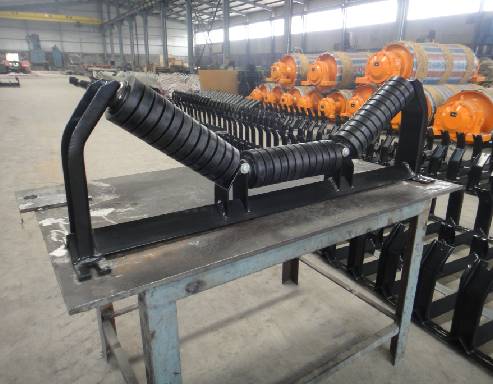 Afrikaans
Afrikaans  Albanian
Albanian  Amharic
Amharic  Arabic
Arabic  Armenian
Armenian  Azerbaijani
Azerbaijani  Basque
Basque  Belarusian
Belarusian  Bengali
Bengali  Bosnian
Bosnian  Bulgarian
Bulgarian  Catalan
Catalan  Cebuano
Cebuano  Corsican
Corsican  Croatian
Croatian  Czech
Czech  Danish
Danish  Dutch
Dutch  English
English  Esperanto
Esperanto  Estonian
Estonian  Finnish
Finnish  French
French  Frisian
Frisian  Galician
Galician  Georgian
Georgian  German
German  Greek
Greek  Gujarati
Gujarati  Haitian Creole
Haitian Creole  hausa
hausa  hawaiian
hawaiian  Hebrew
Hebrew  Hindi
Hindi  Miao
Miao  Hungarian
Hungarian  Icelandic
Icelandic  igbo
igbo  Indonesian
Indonesian  irish
irish  Italian
Italian  Japanese
Japanese  Javanese
Javanese  Kannada
Kannada  kazakh
kazakh  Khmer
Khmer  Rwandese
Rwandese  Korean
Korean  Kurdish
Kurdish  Kyrgyz
Kyrgyz  Lao
Lao  Latin
Latin  Latvian
Latvian  Lithuanian
Lithuanian  Luxembourgish
Luxembourgish  Macedonian
Macedonian  Malgashi
Malgashi  Malay
Malay  Malayalam
Malayalam  Maltese
Maltese  Maori
Maori  Marathi
Marathi  Mongolian
Mongolian  Myanmar
Myanmar  Nepali
Nepali  Norwegian
Norwegian  Norwegian
Norwegian  Occitan
Occitan  Pashto
Pashto  Persian
Persian  Polish
Polish  Portuguese
Portuguese  Punjabi
Punjabi  Romanian
Romanian  Russian
Russian  Samoan
Samoan  Scottish Gaelic
Scottish Gaelic  Serbian
Serbian  Sesotho
Sesotho  Shona
Shona  Sindhi
Sindhi  Sinhala
Sinhala  Slovak
Slovak  Slovenian
Slovenian  Somali
Somali  Spanish
Spanish  Sundanese
Sundanese  Swahili
Swahili  Swedish
Swedish  Tagalog
Tagalog  Tajik
Tajik  Tamil
Tamil  Tatar
Tatar  Telugu
Telugu  Thai
Thai  Turkish
Turkish  Turkmen
Turkmen  Ukrainian
Ukrainian  Urdu
Urdu  Uighur
Uighur  Uzbek
Uzbek  Vietnamese
Vietnamese  Welsh
Welsh  Bantu
Bantu  Yiddish
Yiddish  Yoruba
Yoruba  Zulu
Zulu Understanding the Importance of Trough Idler Rollers in Belt Conveyor Systems
Understanding Trough Idler Rollers Essential Components for Efficient Bulk Material Handling
Trough idler rollers play a crucial role in the bulk material handling industry, serving as integral components of conveyor systems. Their design and functionality contribute significantly to the efficiency, safety, and effectiveness of the transportation of various materials, ranging from minerals to agricultural products. In this article, we will explore the importance of trough idler rollers, their design features, applications, and maintenance practices to ensure optimal performance.
What are Trough Idler Rollers?
Trough idler rollers are cylindrical components mounted on a conveyor system, supporting the conveyor belt and facilitating the movement of bulk materials. Unlike flat rollers, trough idlers are shaped to form a V or angled shape, which helps to hold the conveyed material in place and prevent spillage. This design is particularly beneficial for handling loose materials such as coal, gravel, and ore, which can easily fall off flat surfaces.
Key Features and Benefits
1. Stability and Support The trough design of these rollers creates a stable platform for the material being transported. By keeping the material within the confines of the belt, trough idler rollers help minimize losses, which can lead to increased operational efficiency and reduced material waste.
2. Reduced Wear and Tear Trough idler rollers are engineered to reduce friction and misalignment of the conveyor belt. This not only extends the life of the belt but also minimizes the wear and tear on both the rollers and the belt itself, leading to lower maintenance costs.
3. Versatility Trough idler rollers are highly versatile and can be employed in various applications. Their ability to handle different types of materials and their adaptability to different conveyor configurations make them suitable for industries such as mining, agriculture, construction, and waste management.
4. Improved Material Flow The trough shape of the rollers enhances the flow of bulk materials, ensuring a continuous and efficient movement. This is particularly important in high-capacity applications where downtime can lead to significant operational losses.
trough idler rollers

Applications of Trough Idler Rollers
Trough idler rollers find applications in a wide variety of industrial sectors
- Mining and Mineral Processing They are extensively used in conveying ores, coal, and other mining products due to their robustness and ability to handle heavy loads. - Agriculture In agriculture, these rollers are used in transporting grains, fertilizers, and various agricultural inputs. - Construction Trough idler rollers assist in the movement of sand, gravel, and other construction materials, facilitating efficient operations on construction sites. - Waste Management In waste management systems, trough idler rollers help transport recyclable materials, contributing to efficient waste processing.
Maintenance and Best Practices
To ensure the longevity and efficiency of trough idler rollers, regular maintenance practices should be followed
- Routine Inspections Conduct regular inspections to identify wear and damage to the rollers and belts. Early detection can prevent more significant issues down the line. - Proper Alignment Ensure that the rollers are properly aligned to reduce uneven wear and facilitate smooth operation. - Lubrication Regular lubrication of the roller bearings will reduce friction and prolong the life of the rollers. - Cleaning Keep the rollers free from debris and built-up materials, which can affect their performance and lead to increased wear.
Conclusion
Trough idler rollers are indispensable components in the bulk material handling process. Their unique design contributes to the efficient transportation of various materials while minimizing spillage and maintenance costs. Understanding their functionality, applications, and maintenance practices is essential for businesses looking to optimize their conveyor systems and enhance operational efficiency. Investing in high-quality trough idler rollers and adhering to best maintenance practices will ensure reliable performance and longevity in material handling operations.
-
Revolutionizing Conveyor Reliability with Advanced Rubber Lagging PulleysNewsJul.22,2025
-
Powering Precision and Durability with Expert Manufacturers of Conveyor ComponentsNewsJul.22,2025
-
Optimizing Conveyor Systems with Advanced Conveyor AccessoriesNewsJul.22,2025
-
Maximize Conveyor Efficiency with Quality Conveyor Idler PulleysNewsJul.22,2025
-
Future-Proof Your Conveyor System with High-Performance Polyurethane RollerNewsJul.22,2025
-
Driving Efficiency Forward with Quality Idlers and RollersNewsJul.22,2025





























